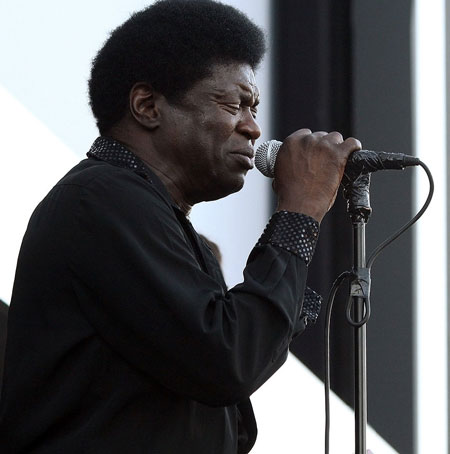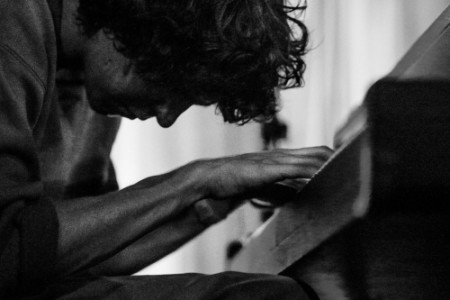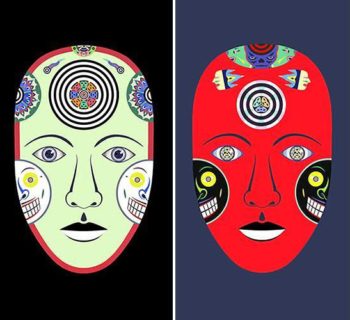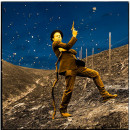“We travel, initially, to lose ourselves; and we travel, next, to find ourselves. We travel to open our hearts and eyes and learn more about the world than our newspapers will accommodate. We travel to bring what little we can, in our ignorance and knowledge, to those parts of the globe whose riches are differently dispersed. And we travel, in essence, to become young fools again – to slow time down and get taken in, and fall in love once more.”
- Pico Iyer, author and long-time Kyoto expat
In 2010, my life was dominated by a frustrating, overwhelming job and the slow-rolling, picking-up-speed kind of grief that accompanies watching one’s formerly indomitable elderly mother start to fail. Desperate for a brief respite, the stars aligned and I got away to spend a week in Tokyo (alone and perpetually lost) and a week in Kyoto (with my capable and efficient friend, Fujiko). It was my first and only trip to Japan – not only am I no expert, but I’m no doubt naïvely romantic about the place.
Why are my memories of those two short weeks so potent? I instantly adored my shabby, pocket-sized Tokyo hotel room with the tiny deep tub and heated toilet seat; it became my womb-like base camp. I loved celebrating my birthday alone, leisurely breakfasting on the hotel’s 39th floor and drinking in the 360-degree panorama of urban clutter stretching to the horizon, Mt. Fuji diminutive and pale in the distance.
I relished crossing the street and descending into the maw of cavernous Shinagawa Station every morning, trying to look as purposeful as the human tidal wave that surrounded me. I especially loved the solemn schoolboy, perhaps six years old, whom I noticed traveling alone on the subway. When he got off at my stop, I followed him, watching him negotiate his way through crowded corridors to a steep bank of stairs where, on the top step, a woman who must have been his mother was kneeling with her arms outstretched, beaming.

Mixed media Moleskine journal created with found washi paper, museum flyers and advertising materials from Tokyo and Kyoto. By Elaine Pierce
I loved the sakura (weeping cherry trees) dusted with fluttering pale pink flowers against a leaden sky, surrounded by serious men with serious cameras on tripods. I loved coming across simple neighborhood shrines that sheltered rough-hewn, faceless rock figurines in calligraphy-inscribed aprons. These were carefully surrounded by flower arrangements and stacked fruit, open to the street yet unmolested by mischief-makers. I loved Minnie Mouse in a kimono, baby octopi winking at me from my soup bowl, and holding a light-as-air sweet on my tongue as I bathed it in foamy, bitter green tea. Goofy cosplay in Harajuku pressed against stately Shinto wedding ceremonies from another century at Meiji Jingu Shrine.
I loved the two-handed presentation of business cards, not to mention the custom of bowing as an all-purpose social lubricant – the number, depth and rapidity of bows calibrated to one’s degree of gratitude and relative social standing (one of the few customs I felt I could master during my time there). I loved the sing-songy voices of the vendors (“ItadakiMAAASu!”), whimsically cute stone statues commemorating cherished children at the cemetery, and bizarre vending machine merchandise. (Umbrellas? Fishing bait? Porn manga?) I was charmed by Kyoto’s gracious young women, kimonos luscious as confectionary icing, who smiled and posed whenever I whipped out my camera. “Arigato gozaimasu,” I would murmur, enjoying this most ephemeral of interactions. It amazed me that our big urban hotel didn’t look at or record my credit card number until the morning we checked out, and that bicycles were left on the street unsecured.

Mixed media Moleskine journal created with found washi paper, museum flyers and advertising materials from Tokyo and Kyoto. By Elaine Pierce
Looking through a window as my subway car pulled out from Akihabara Station, I wondered what the pensive young woman waiting on the platform in a Victorian maid uniform was thinking. A stroll through a rustling apple-green bamboo forest quietly thrilled me, as did intricate geometric patterns raked in gravel, and compact seaside towns floating far beneath my bullet train, their indigo porcelain roofs gleaming under a weak sun. Sake infused me with a mellow warmth in the evenings as I pondered the day’s adventures and oddities. Unwinding from their notoriously long workweeks, I had to smile when a small cluster of salarymen staggered by, arms on each other’s shoulders, belting out an off-key song aimed at the moon. In Tokyo, it was sheer delight to hopscotch all over one of the world’s largest cities without an iota of worry during daylight hours that I might wander into a dangerous neighborhood, even being the functional deaf-mute that I was. I hadn’t felt such trust that the universe would reach out and catch me if I fell since the freewheeling ‘70s.
I loved – well, you get the picture. I friggin’ loved Japan.
As an artist, I was entranced by a refined design sensibility apparent in every possible medium, from concrete to plastic. Each day was a scavenger hunt, as I squirreled away delicate washi paper, print ads, and museum brochures for collages that I made in my hotel room late into the night. I admired warm bento boxes wrapped like gifts. I marveled over beautiful hand towels that Japanese women carry in their purses, since towels are not usually provided in public restrooms. Sure, I expected to be knocked out by scroll paintings, lacquered tea caddies, antique swords, woodblock prints, temple statues and silk brocade, but the fact that even the most prosaic object was often venerated by the care taken in its manufacture spoke to me of life savored in the smallest detail. Hell, even the fake food reproductions in restaurant windows were damned good.

Mixed media Moleskine journal created with found washi paper, museum flyers and advertising materials from Tokyo and Kyoto. By Elaine Pierce
One day I had made it the morning’s mission to find the Museum of Advertising in Ginza district despite a growing sense of futility (unbeknownst to me, it was a holiday week and almost every museum I had tried to visit was closed). With my pathetically inadequate guidebook Japanese, hand gestures were really the only things I understood when I pointed to my map and bleated “Doko desu ka?” By the end of each block my confidence eroded into confusion and I’d have to repeat the process. Finally, finally, there was the museum. Closed. D’OH!!!
I retreated up a tangle of escalators to a nearby Starbucks to revise my expectations. Bland homogeneity was feeling pretty good right then. Buoyed by Moby, REM, Talking Heads, Beck, “A Free Man in Paris”, I sat at a window counter looking down at a triangular courtyard completely surrounded by featureless office buildings and a multilevel parking garage. Not a scrap of landscaping to be seen – it could have been a vast prison exercise yard. A soft rain had created shallow puddles on the concrete. Stylish urbanites moved briskly in all directions, holding aloft a kaleidoscope of brightly colored umbrellas that were reflected, shattered and prismatic, in the water beneath their feet. It was utterly mesmerizing, like Monet at Giverny in perpetual motion.
After drinking in this incidental beauty for a while, I noticed an odd stainless steel structure at one corner of the courtyard. It was about twenty feet at its longest diameter and apparently used for drainage, given the perforations along its base. But why was it a convex shape, bulging upwards from the flat concrete floor? Why was it divided into a dozen or so hexagonal plates with contrasting textures at their borders? And why was an edge at one tip of the long axis rolled slightly upwards, when the rest of the structure maintained a straight line all the way to the ground?
As I stared dreamily, sipping my green tea latte, a thought tumbled to the foreground. “It’s… an… enormous… turtle shell.” It’s a placid sea giant, swimming languidly through a concrete ocean, oblivious to the swarm of iridescent bugs buzzing around it, pursuing their own agendas.

Mixed media Moleskine journal created with found washi paper, museum flyers and advertising materials from Tokyo and Kyoto. By Elaine Pierce
I pictured dour, black-suited professionals huddled around the architectural plans for this building complex, burdened by their technical responsibilities, gravely agreeing to create this most oblique homage to the natural world. “Let it be unrecognizable to commuters at ground level who rush by it every day.” “Let it be fashioned in an uncompromising manner from sleek industrial materials.” “Let its scale and utility obfuscate its whimsical nature.” “Let the occasional viewer who happens to possess the right vantage point and mindset rejoice in penetrating its secret.” “Hai?!” “Hai!”
That’s Japan for you. Cryptic, subversively beautiful, inviting yet ultimately baffling. As opaque as the faces of the geisha whom one can still see on the streets of Kyoto.












